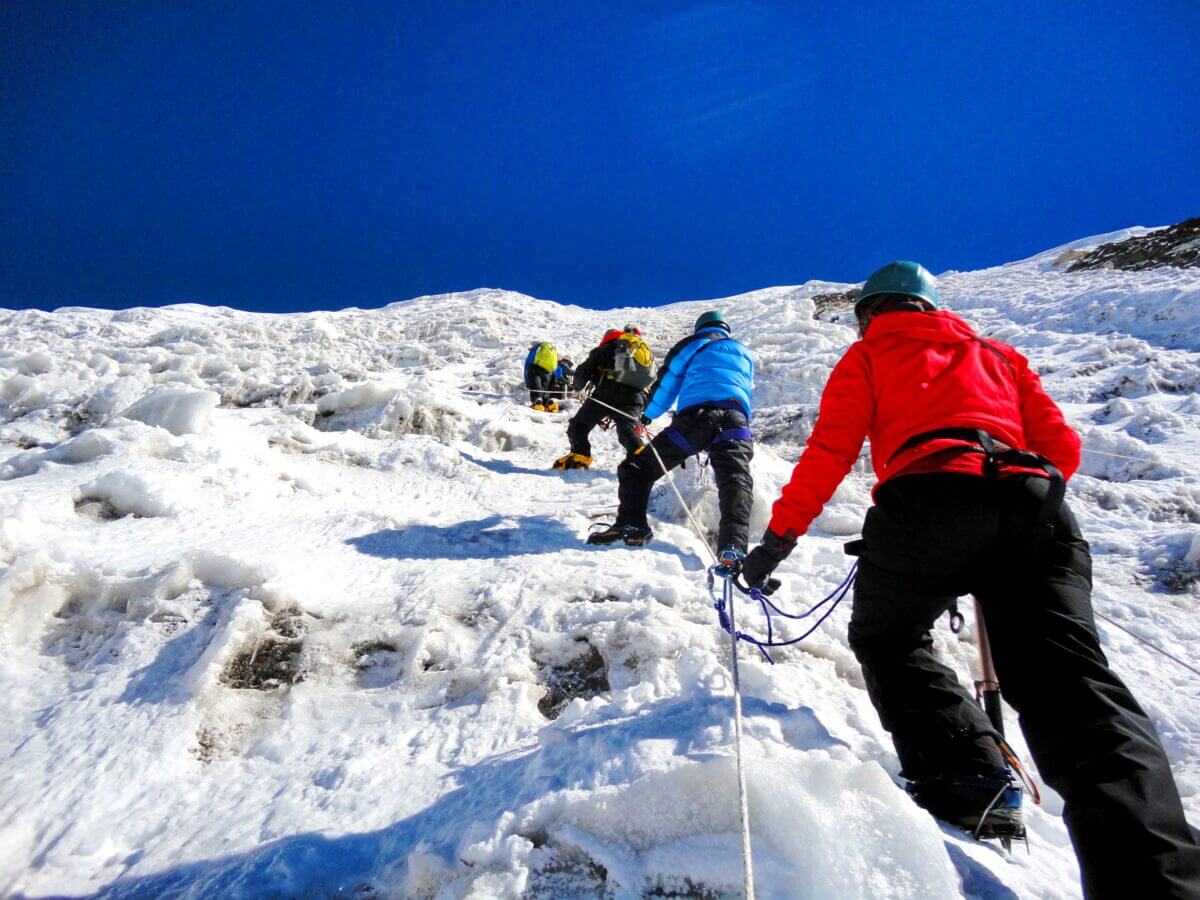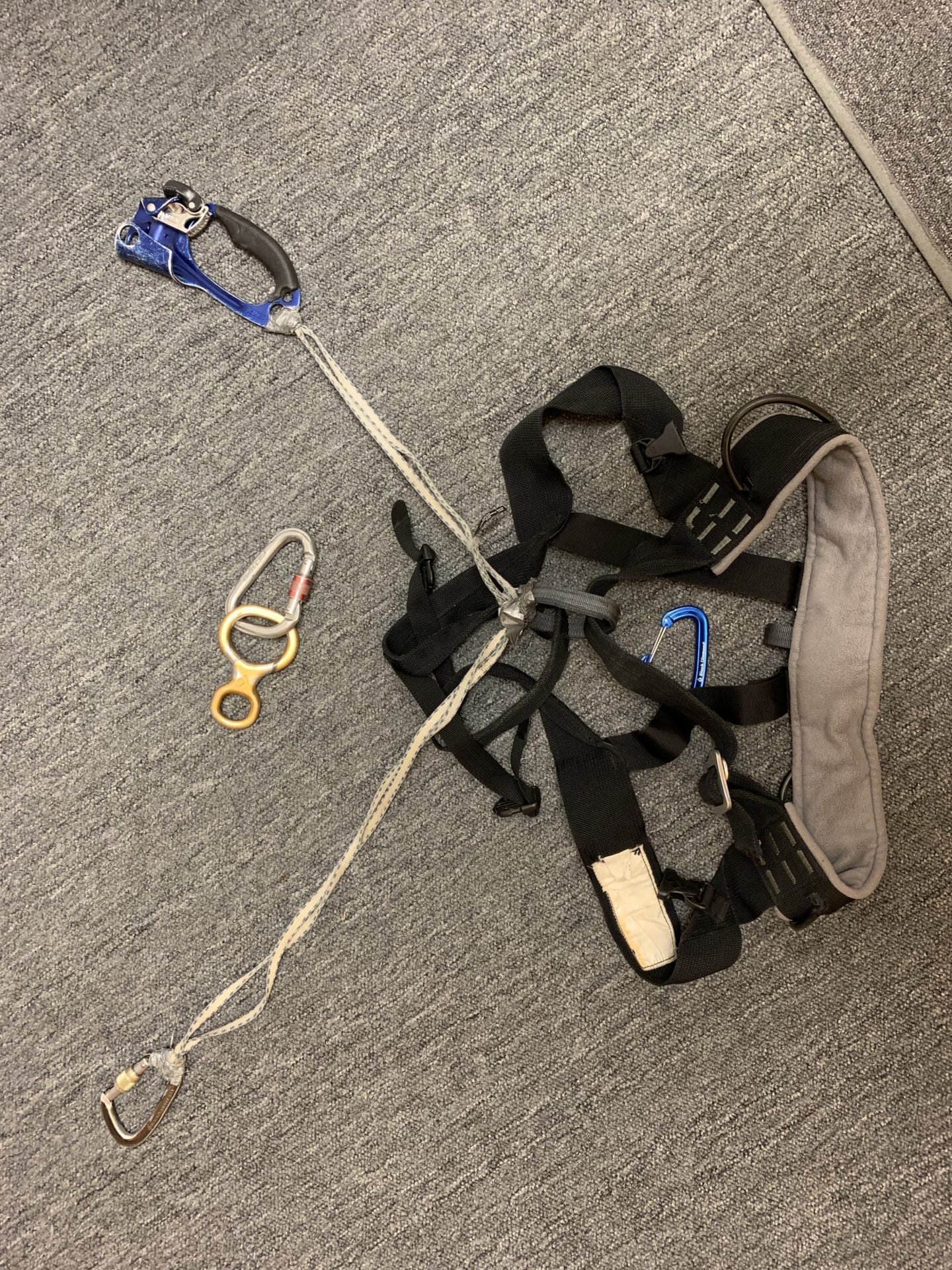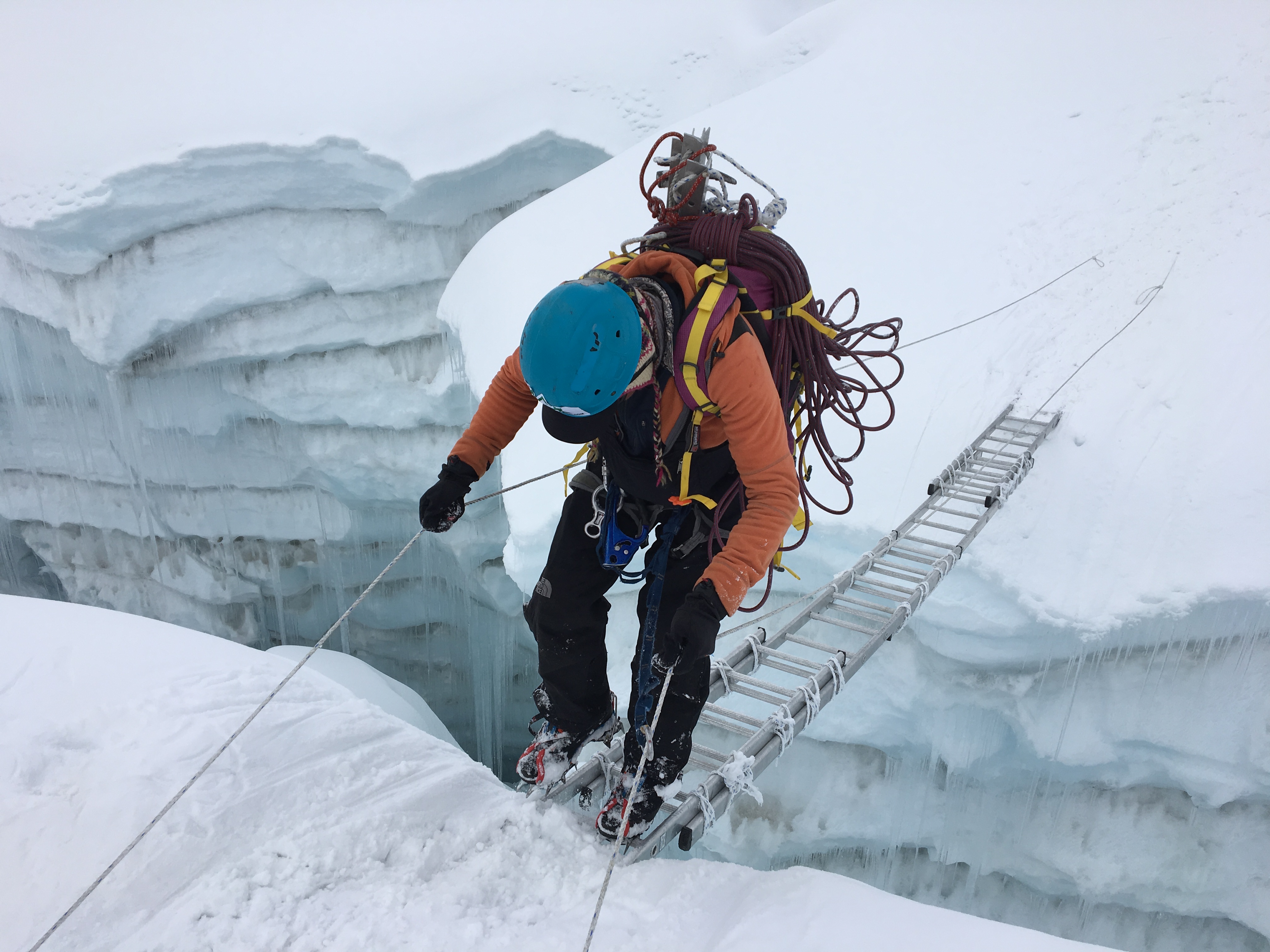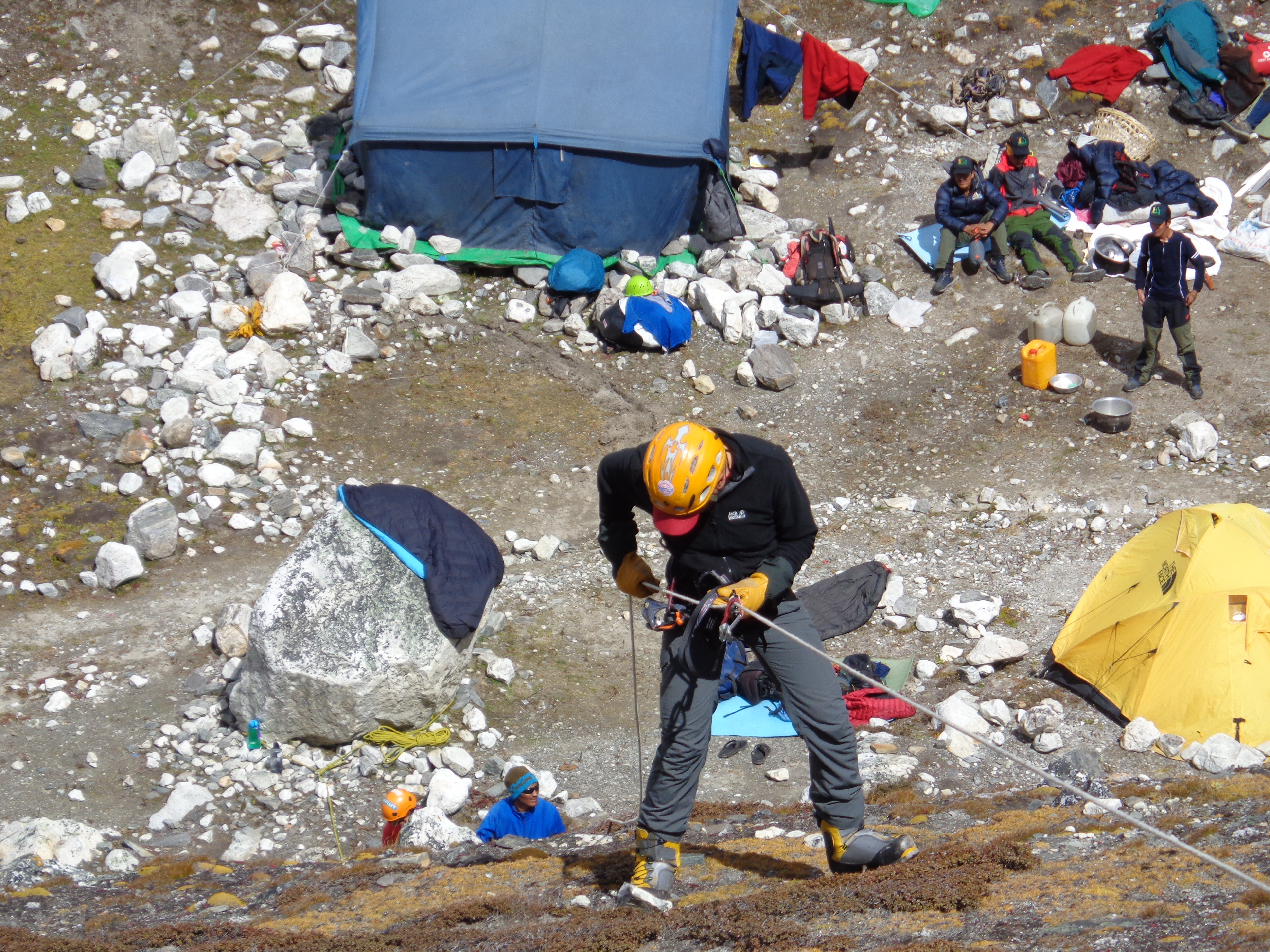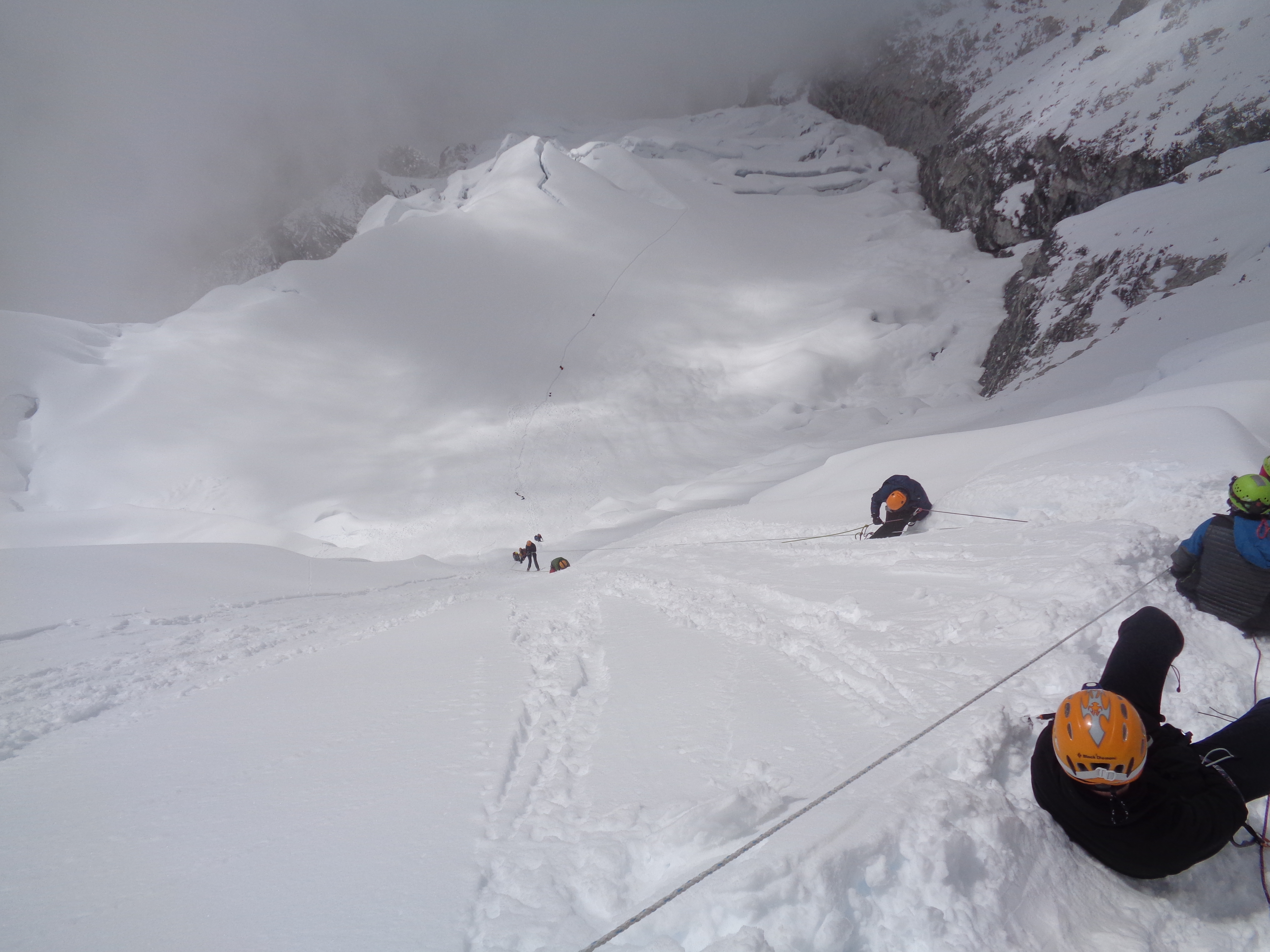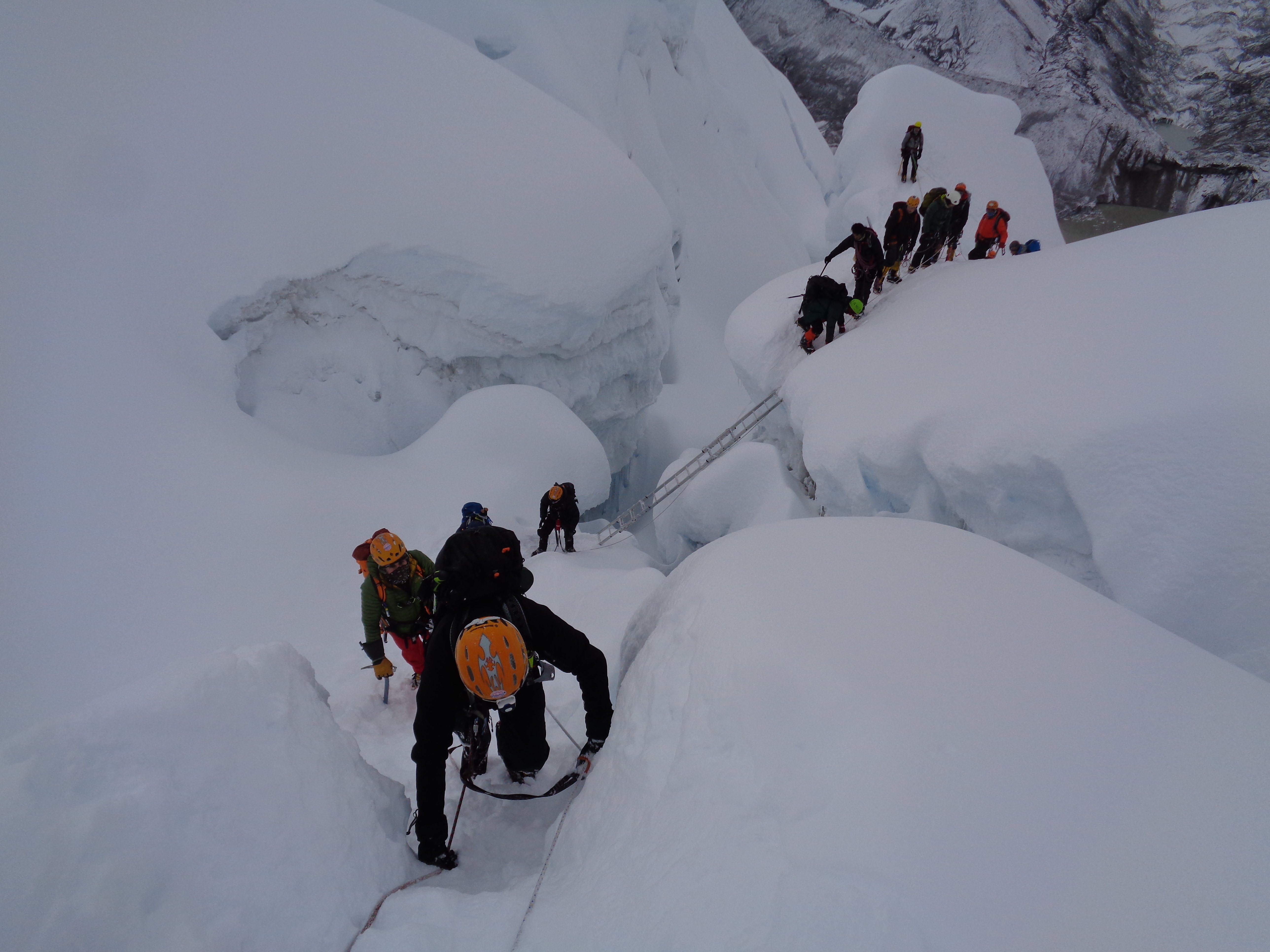Climbing a Himalayan peak like Island Peak is going to require specific and strenuous training. We have been leading trips on Island Peak for over 15 years and have developed an itinerary and trip that gives you the best chance of a safe and successful climb. Don’t underestimate this climb. Island Peak is not a trekking peak, it is a technical climb, and you need to come prepared.
Island Peak is a Mountaineering Peak
The first thing to remember is that Island Peak is constantly changing. The route, terrain and the glacier changes from one season to the next. Specific technical training is needed to be safe climbing Island Peak. We do require that everyone is comfortable using a jumar and competent using a figure of 8 and moving between fixed lines. This is a requirement to join one of our trips. There have been a number of deaths in recent years so having the correct itinerary, acclimatization and professionals around you will make all the difference.
Be Ready for Anything
Ian has been on 24 Island Peak Expeditions, and each one of those has been totally different than the last. The route up the head-wall changes each season, and sometimes it is more difficult than others. Over the years, the route has become more challenging and more dangerous. Years ago, the route was a lot more straight forward, however as the ice is melting on the Head-Wall, the route to the summit has become more direct.
The climb can be very challenging if there is a lot of snow. If there has been no snow and higher temperatures, then you will find less ice on the head wall, and undulating ice climb with exposed rock. In recent years Island Peak has become more challenging. Because you never know what the conditions will be, you must show up fully prepared!
Be Physically Ready for Island Peak
When it comes to mountaineering, you want to be training harder than you think. You could encounter an ice wall with no rest for your calves. You could encounter deep snow, either way, you need to be fully prepared for the hard slog. The conditions could be such that you could have over a twelve hour summit day before getting back to Base Camp or Chuckung. Likewise, we have had teams have 19 hour summit days! When it comes to any mountaineering trip, you need to be in excellent physical shape so that you can be ready for whatever is thrown at you.
Island Peak is not trekking. You need to be fully trained and prepared and always in control. Watch more videos There is specific training needed for a safe and successful Island Peak climb. As you can see in our videos, the steep challenges of Island peak require respect and specific physical conditioning and mountaineering skills. If you are signed up to one of our climbs we are available to help you get the best and current information on this climb.
Can you Walk Across a Ladder with Crampons?
Sometimes climbing seasons you have to cross ladders on Island Peak. Therefore, you should come with that level of preparation. Do some ladder training at home with a guide becoming comfortable crossing ladders with your mountaineering boots and crampons. Be very comfortable using crampons and do a lot of practice taking them on and off. The more comfortable you are the better and safer you will be high on Island peak.
Specific Mountaineering Training for Island Peak
When it comes to preparing for going up the head wall, you need to find 60 to 70 degree angle terrain. Have a guide set up ropes with 4 to 5 different anchor points. You will have a jumar on a sling or cows tail, attached to your harness. You should also have a sling (safety line) with a carabiner on the end of the sling. The carabiner should be able to go above the Jumar on the fixed line or in the middle of your jumar. You do not want the Jumar going higher than your nose when fully tight. We run these courses in Scotland and Colorado.
This Training is Required for Your Safety!!
The key mountaineering training should be for going down the head wall. You will want your safety line with carabiner on the fixed line. The safety should be kept above the figure of 8 (descending device) as you abseil down. You need to be comfortable abseiling using a figure of 8 and learning to flip the figure of 8 over once you reach each anchor point. Making sure your safety line is tight as you find the next abseil. Once you have found the rope and you are safe with the figure of 8 to abseil, then and only then, do you take the safety line from above the anchor point and place on the rope you are abseiling on.
Going Down the Head Wall
You will have to abseil or rappel down the head wall using a figure of 8 at 6,150m/ 20,177 feet. You will need to have the leg strength to get you up and down steep terrain. Importantly, you will need to be very comfortable using ropes, Jumar (ascender) and abseiling using a figure of 8 device on fixed lines. This is extremely important for your safety and the safety of the team and our guides. If you are not competent in these skills we can not take you high on the mountain.
Specific Training for Island Peak
Fitness is important, but being lean, lighter and strong is really important when climbing these big mountains. Do not under estimate this Island Peak challenge. Read some REVIEWS from our trips. We recommend physical training 5/6 days a week. Focus on two main elements of building strength and endurance in your targeted heart rate zones. We can help you understand the training requires for Island Peak.
Build up Your Training Over Time
Our recommendation is to be training 6 days a week. One day should be dedicated to long hikes up and down hills with a weighted backpack building up to 1,000m/ 3,280 feet. Train on a stair master 4 – 5 days a week, starting with minimal weight in your backpack 5kg/ 11lbs. Then, we recommend slowly building up to carrying 15kg/ 33lbs. You need to train to specific heart rates, therefore doing a fitness test is a very good idea prior to developing a training plan. You should be doing most of your training in the endurance zone. Building from 1 to 1 hour 30 minutes per day for four or five sessions a week.
Core Stability
You also need to be have excellent leg strength and core stability for the steep ascent and descent. When climbing on steep technical terrain like Island Peak, you need excellent stability. You also need power and we recommend adding HIIT training for this type of climb.
Long Endurance Hikes
Also, you need a longer endurance session, once per week. This longer endurance session is best completed up and down hills with weight in your backpack. However, if you do not have access to hills. It can be done on a bike doing a long ride or in the gym mixing up the machines you use at very targeted heart rates. We can help you figure this one out to suit your specific situation.
You should be looking at building from 6 to 12+ hours of training per week. Each month you should be trying to increase the weight you carry and the time spent doing the activity. After 2 months, you should start adding in some weight training, developing your quads, calves, and core. In the last 2 months, you should consider adding in interval training, all while you are still doing the endurance training building up the weight you are carrying.
Strength and Endurance Training
Your Island peak summit day could be 12 – 16+ hours, depending on conditions. Therefore, you need to have the strength and endurance to be able to manage this long day after walking 13 days to get to this point. Also, remember that you will then still have to walk 50+km back to Lukla. If you are signing up to one of our Island peak climbs, we will be available as needed to help you. We want to make sure you are getting the correct information needed for this exciting and challenging climb. CONTACT US today for further information.

